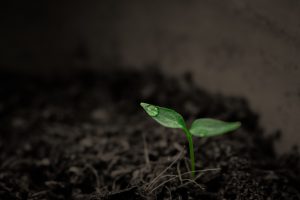
From 1992 to 20161 the percentage of land used for agricultural purposes worldwide has remained steady between 37.2 and 37.8 percent; however, the worldwide population has increased by 2 billion over this period. Agricultural land covered 37.4% of the earth’s total landmass in 2016. The population of the world stood at 7.5 billion, an increase from 5.5 billion in 1992. By 2019, the population totaled 7.7 billion. As a result, land set aside for agriculture must be more productive to provide food for so many more people.
In areas where labor is expensive and advanced technology is available, such as in North America and Europe, farmers increasingly have been using precision farming techniques to boost their crop quality and yield and reduce waste. Precision farming involves monitoring soil quality using electronic equipment, remote sensing, and computer models. When soil conditions become less than ideal, farmers use soil conditioners.
Soil conditioners are products that are added to the soil to improve its ability to provide water and nutrients to plants. In addition to adding nutrients to the soil, soil conditioners can also keep the soil loose to prevent the soil from compacting. Soil compaction can impede root growth and prevent plants from absorbing nutrients and water. What type of soil conditioner to use depends on the type of soil being treated. Some examples of soil conditioners include bone meal, blood meal, compost, manure, straw, peat, vermiculite, superabsorbent hydrogel polymers, and biosolids.
As the demand for organic food increases so too does the demand for natural and organic soil conditioners. Regulations against many synthetic agrochemicals that may harm soil or water will also fuel demand for natural and organic soil conditioners. With the changing climate, reduced rainfall and drought are becoming more prevalent in many areas of the world. Hydrogel soil conditioners, which help the soil retain water, are expected to become a significant portion of the market in 2025, with revenues expected to reach $3.0 billion. However, many see the use of one type of hydrogel problematic. When polyacrylamide hydrogel degrades, it releases acrylamide into the soil. Acrylamide is a known neurotoxin and potential carcinogen.
Today’s market size shows the total global revenues for soil conditioners in 2018 and projected for 2025. By volume, soil conditioners are most used on land where cereal and grain crops grow, followed by oilseeds and pulses and then fruits and vegetables. The Asia-Pacific region accounted for the highest revenue share followed by North America. Several multi-national companies manufacture soil conditioners as do regional and local firms. Major manufacturers include UPL,2 BASF SE, Solvay S.A., Syngenta AG, Nufarm, and AkzoNobel.
1 The last year for which data are available.2 UPL acquired Arysta LifeScience in February 2019.
Geographic reference: World
Year: 2018 and 2025
Market size: $5.4 billion and $7.9 billion, respectively
Sources: “Soil Conditioners Market Size, Share & Trends Analysis Report by Product (Synthetic, Natural), by Solubility (Water Soluble, Hydrogels), by Soil Type (Loam, Sand), by Crop Type, by Region, and Segment Forecasts, 2019-2025,” Grand View Research Report Summary, October 2019 available online here; “Soil Conditioner Market Size Worth $7.9 Billion by 2025,” Cision PR Newswire Press Release, October 8, 2019 available online here; “Soil Conditioner,” Wikipedia, September 28, 2019 available online here; “Agricultural Land (% of Land Area),” The World Bank available online here; Max Roser, Hannah Ritchie, and Esteban Ortiz-Ospina, “World Population Growth,” Our World in Data, May 2019 available online here; Linda Chalker-Scott, “The Myth of Polyacrylamide Hydrogels” available online here; “Hydrogel Agriculture,” Wikipedia, October 7, 2019 available online here.
Image source: Ngo Minh Tuan, “green-grow-grow-up-plant-rain-2551467,” Pixabay, July 29, 2017 available online here.
